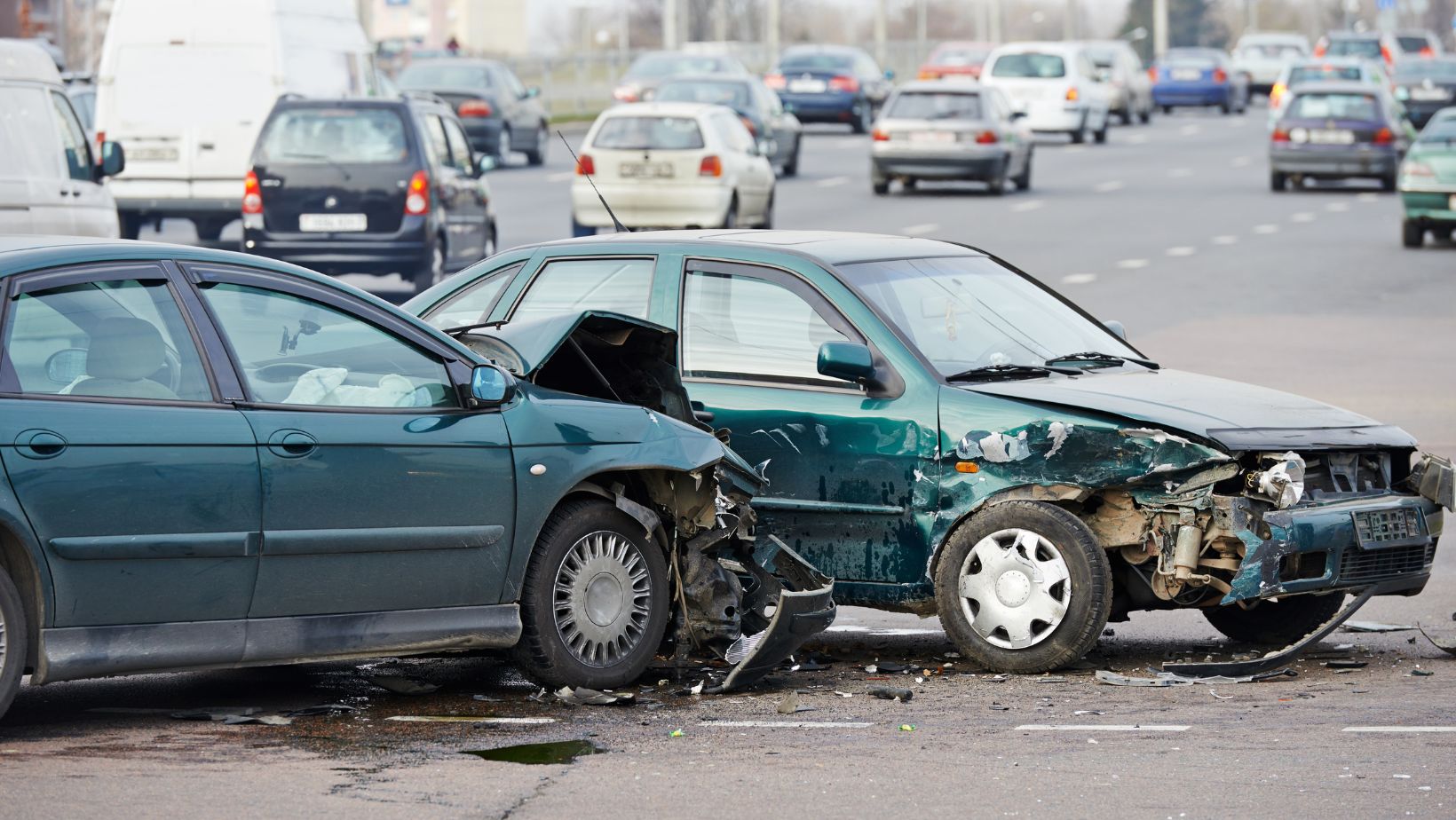
If the thought of being involved in a head-on collision leaves you feeling a little anxious, you’re not alone. Injuries tend to be more severe in head-on collisions compared to some other types of car accidents, and fatalities aren’t uncommon.
Head-on collision risks and dangers are something all drivers should be familiar with, and it also helps to know what causes this type of vehicle accident. Knowing what can cause a head-on collision can help you stay a little safer and make it easier to recover the common types of compensation after an Ohio head-on collision.
What Are the Common Causes of Head-On Collisions?
When you think of a head-on collision, it’s not uncommon to wonder if the at-fault driver is intoxicated. After all, why else would someone drive head-on into another vehicle if they’re not impaired behind the wheel?
Driving under the influence (DUI) is a common cause of head-on collisions. In fact, according to statistics from the National Highway Transportation Safety Administration (NHTSA), the number of vehicle accidents involving impaired drivers is on the rise, increasing by 14.2 between 2020 and 2021. An impaired driver can easily cross over into the path of an oncoming vehicle, resulting in a devastating head-on collision.
Even though driving while impaired is a primary cause, it’s not the only reason head-on car accidents occur.
Distracted Driving
Yes, it’s illegal to text and drive in Ohio. You also can’t pick up your cell phone or another type of handheld device to search the internet or make and receive phone calls.
In other words, don’t use any type of handheld device while you’re behind the wheel. This helps prevent some types of distracted driving accidents like head-on collisions, but cell phones aren’t the only things that can take drivers’ attention off the road.
Passengers can be distracting, along with pets and fussy infants. Ohio has some spectacular scenery and this can also be a distraction. Do you find yourself staring out the driver’s side window whenever you pass by an accident? If so, this is a type of distracted driving. Distracted driving can be divided into a few categories: visual, auditory, cognitive, and manual.
Visual distractions are anything that makes you look away from the road. Auditory distractions are sounds that interfere with your ability to concentrate on your driving. A manual distraction forces you to remove one or both hands from the steering wheel. An example is taking a sip of coffee.
Cognitive distractions affect your ability to focus on your driving. Your eyes may be on the road and both hands on the steering wheel, but the only problem is that your mind is focusing on something else. When you’re not paying attention to your driving, it’s easy to get into an accident, such as a head-on collision.
Vehicle Malfunctions
Whenever you purchase a new or gently used vehicle, you expect everything to work perfectly. The same applies when you take your car in for repairs or routine maintenance. However, vehicle parts can malfunction, like brakes failing or a tire blowing out. When a part malfunctions, a head-on collision can occur.

For example, if a tire blows out on the highway, you’re probably traveling at a relatively high rate of speed. The loss of a tire makes the vehicle harder to control, especially if you’re going at highway speeds. Failed brakes can make it impossible to stop in time.
To avoid a rear-end accident, you may swerve to avoid the obstacle only to find yourself in the way of oncoming traffic. These are only a couple of examples of how a vehicle malfunction can cause a head-on collision.
Poor Road or Weather Conditions
Yes, Ohio is known for its hot and sunny weather, but this doesn’t apply throughout the year. The state can experience hazardous weather conditions like heavy rains and strong wind gusts.
During bad weather conditions, roads can become slick, and visibility decreases. Slick, wet roads can make it harder to control your vehicle. If you hit the brakes too hard, you can spin out into traffic. You also need to worry about hydroplaning. This happens when your tires aren’t connecting with the pavement.
Road conditions can also cause a head-on collision. Everything from uneven pavement to large potholes and missing dividing lines can cause you to drift into another traffic lane. If you notice the road isn’t being properly maintained, drive slowly and cautiously. Yes, it may take longer to reach your destination, but at least you’re avoiding being involved in a head-on collision.
Ignoring Traffic Lights and Road Signs
Traffic lights aren’t for show or decoration. The same applies to road signs. If you’re not already aware, Ohio state law requires all motorists, even visitors, to obey all traffic lights and road signs. In other words, this isn’t a suggestion; it’s the law. Failing to stop at a red light can result in a traffic citation. While you’re probably not facing jail time, the fines can be steep. Not to mention the points you receive on your license.

Why should you worry about getting points on your driver’s license? Every time you receive a point for a traffic violation, your insurance provider is notified. This generally results in higher monthly premiums. If you receive 12 or more points in a year, your license is automatically suspended. Ignoring road signs and traffic lights also increases your risk of being involved in a head-on collision.
Driver Fatigue
Another common cause of head-on collisions is driver fatigue. Trying to focus on driving while also forcing yourself to stay awake is difficult at best. Dozing off even for a second can allow your vehicle to drift into the path of another driver. If the other driver can’t get out of the way in time, a head-on accident can occur.
What Should You Do After a Head-On Collision?
If you’re involved in a head-on collision, you should immediately report the accident. You also want to seek immediate medical attention for your injuries. The next step is to contact an experienced Ohio accident attorney. Your attorney can help ensure you receive compensation for your damages while you concentrate on recovering from the vehicle accident.



